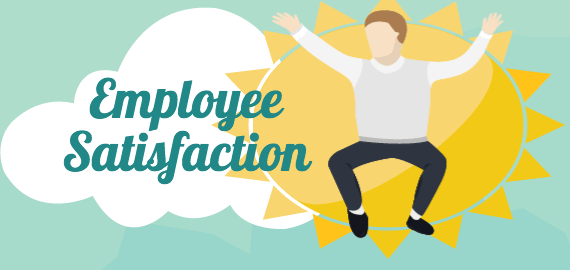Could your business benefit from “going agile”?

If you were presented with two choices – evolve or repeat – which would you choose? In a world characterised by relentless change, it’s a question that every business leader is being faced with. While the natural temptation – and the more comfortable option – might be to select “repeat”, the brave will opt for “evolve” every time.
It’s nearly impossible to maintain the status quo when everything else is in a state of flux. Perhaps that explains the ongoing focus on agility in business. Indeed, research[1] suggests that 94% of surveyed organisations report that “agility and collaboration” are the top priorities for success, yet only 6% would classify themselves as being highly agile today.
What do we mean by agility? Since its inception in 2001 by a small group of software engineers and developers, the agile software movement has emerged as one of the most popular approaches to dealing with rapid change and fostering innovation. The success of agile methodology lies in the fact that it promotes faster, iterative, cost-effective, and more customer-centric software. It has since spread to industries and professions such as accounting, manufacturing, marketing and even HR (to name a few).
Agile traits and features
An agile organisation typically has these traits and defining features [2]:
- Rapid, decentralised decision-making and learning cycles
- A high-performance culture
- Networks of empowered teams
- Flexible management of teams
- Transparent availability of information
- Shared purpose and vision – a “North Star” embodied across the organisation
- Next generation enabling technology
Critically, agile organisations allow creativity and innovation to flourish. They do this by overcoming perhaps the biggest barrier to innovation: a lack of time. Today, lead times are shorter, “short-termism” often dominates strategic thinking, and timeframes for channelling ideas into tangible business outcomes are tighter. In addition, many organisations simply can’t afford to have employees spending time away from “business as usual” to brainstorm and develop ideas.
An agile mindset, and the right structures and processes to support that mindset, can resolve these issues. There’s no more waiting for the “perfect” product or solution to be created and launched into the world. In an agile organisation, it’s a process of constant testing and evaluating. The old saying “fail fast, fail early and fail often” comes into its own in an agile environment – but it’s critical to take those learnings, make changes and do it all over again.
Agile in practice
Agile techniques such as Scrum, Sprint Planning and Continuous Deployment have been utilised to great effect in organisations such as Apple, Philips and Spotify.
Closer to home, ELMO Cloud HR & Payroll is using elements of agile to turbocharge our next phase of growth. It’s a perfect fit. With ELMO’s commitment to remaining a nimble, customer-focused organisation, our ability to foster innovation and bring this to market quickly in the form of ground-breaking solutions continues to be a top priority.
ELMO fuels R&D and Product breakthroughs through tightly-knit Agile Scrum teams. These cross-functional teams help to break down silos, improve development effectiveness and drive customer value. This model allows for:
Reduced handoffs: The scrum teams are cross-functional, bringing typically dispersed skillsets all into the same team. This improves communication, reduces handoff and improves decision-making speed. Teams own decisions for best outcomes – they’re closest, skilled, and experienced.
Ability to scale: By focusing teams around products, we improve ownership, accountability and specialisation, facilitating the growth of ELMO’s solutions while maintaining depth in product understanding. The team-based model also provides greater business resilience by reducing key person risk.
A culture of innovation: Leading studies indicate that psychological safety and environments that are supportive of trying new things drive innovation and superior product outcomes. By pulling together cross-functional teams we’re collocating knowledge and intellect to stimulate broader perspectives and new thinking.
Agile HR
Traditional HR actively enforces controls, sets clear standards, and implements robust systems to ensure everyone’s aligned and focused on execution.
In an agile organisation, however, HR’s role changes.
Agile HR actively puts in place programs, systems, and strategies that cultivate expertise, encourage collaboration, and empower rapid decision-making.
While a whole-hearted embrace of agile methodology by HR is unlikely to occur, elements of it can transform how HR delivers its services.
ELMO’s HR team, for example, designs, deploys and tests people strategies to find out what works best for individuals, teams and the organisation as a whole. Critically, this is not about reckless risk-taking; it’s about taking intelligent risks. Without sacrificing HR’s focus on compliance and ethical behaviour, consider how agile HR could be used for:
Recruitment
- Using a cross-functional team on all hiring requisitions
- Embracing gig workers for short-term projects and freelance assignments
Learning
- Online learning modules that employees can access on demand to encourage continuous learning
- Growth in coaching and mentoring to encourage on the job learning
- Using artificial intelligence to generate learning advice and suggestions
Performance management
- More frequent performance assessments, often conducted project by project
- Continuous feedback
- Simplifying the performance review process
- Separating evaluation from development discussions
- Eliminating talent calibration sessions
ELMO Cloud HR & Payroll provides end-to-end HR, payroll and rostering / time & attendance solutions which can help your organisation introduce market-leading approaches to talent management. To find out more, contact us.
[1] “Rewriting the Rules for the Digital Age”, Deloitte Human Capital Trends, 2017
[2] “The Five Trademarks of Agile Organisations”, McKinsey article, January 2018
 HR Core
HR Core 









